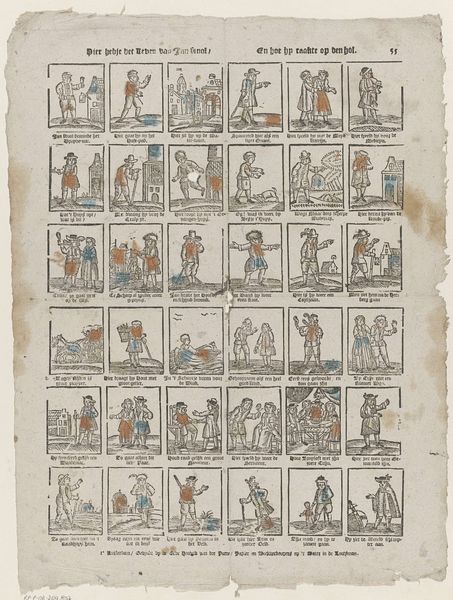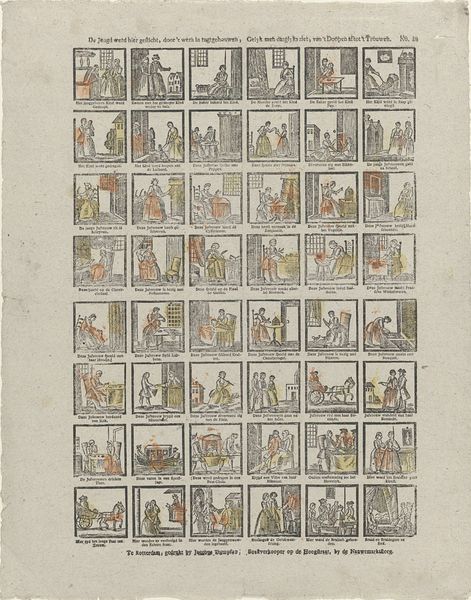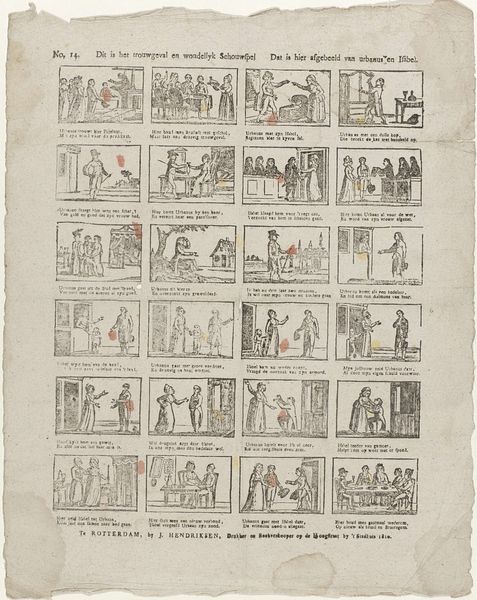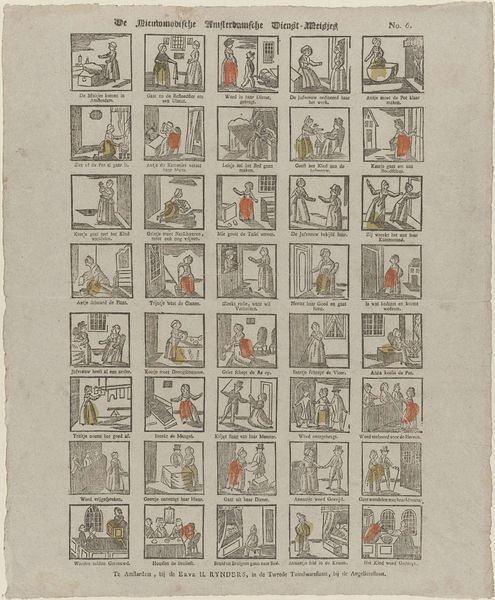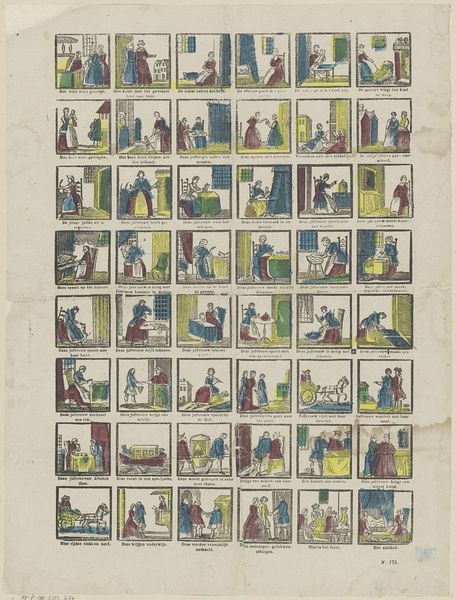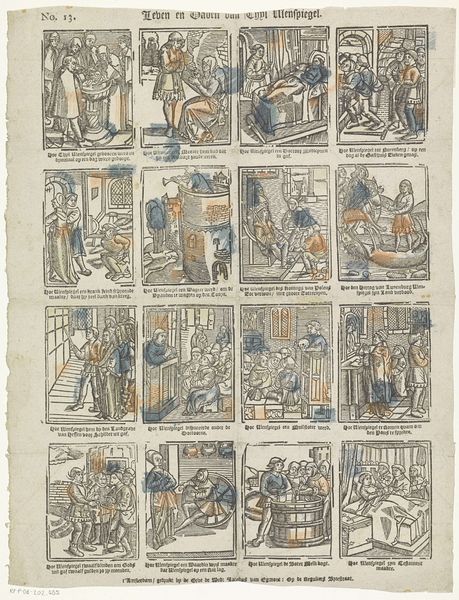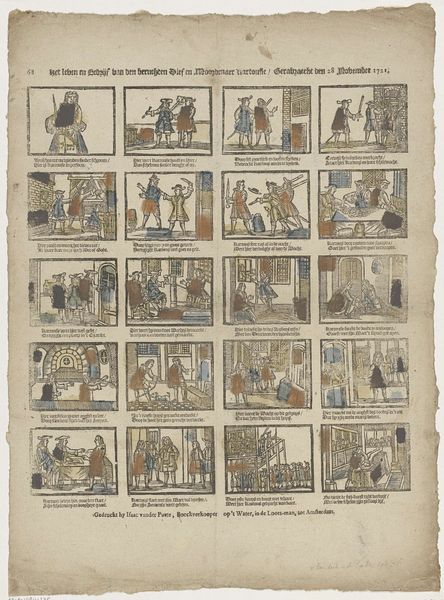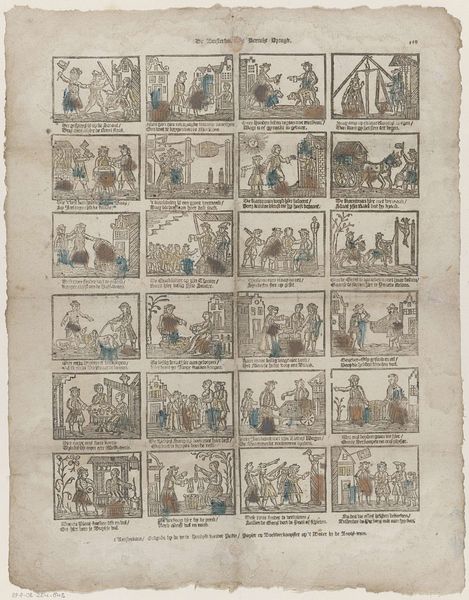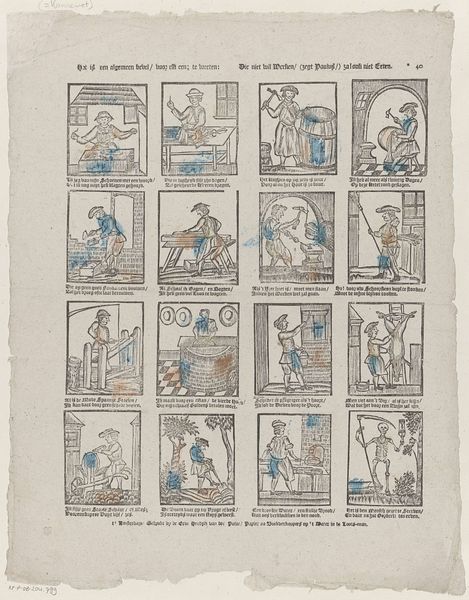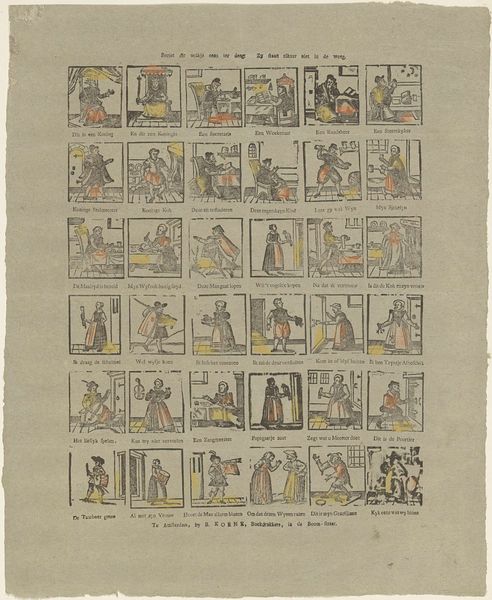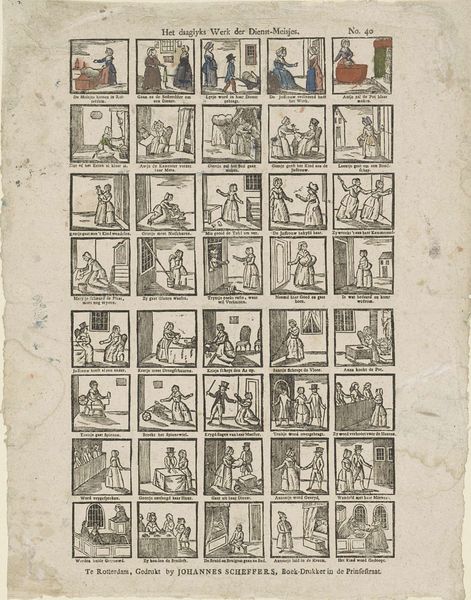
print, woodcut
#
narrative-art
#
dutch-golden-age
# print
#
ukiyo-e
#
woodcut
#
genre-painting
Dimensions: height 419 mm, width 308 mm
Copyright: Rijks Museum: Open Domain
Jan de Wasser was printed by Jan Nieuwenhuyzen, likely in the late 18th century, using paper and ink. It's an example of printmaking, a process with a fascinating relationship to capitalism. The images here are block prints, made by carving an image into a block of wood, inking it, and then pressing it onto paper. This allows for multiple copies to be made quickly and relatively cheaply. This particular print is a series of scenes from everyday life and work. What is so fascinating is how these images were produced. Printmaking was a key technology in the rise of mass media, allowing for the widespread dissemination of information and ideas. It's also worth noting the labor involved in creating these prints. From the papermakers to the woodcutters to the printers themselves, each step required skilled workers. It's a reminder that even seemingly simple images like these are the result of complex social and economic processes. By recognizing the making, the meaning of Jan de Wasser expands beyond its simple appearance.
Comments
No comments
Be the first to comment and join the conversation on the ultimate creative platform.

